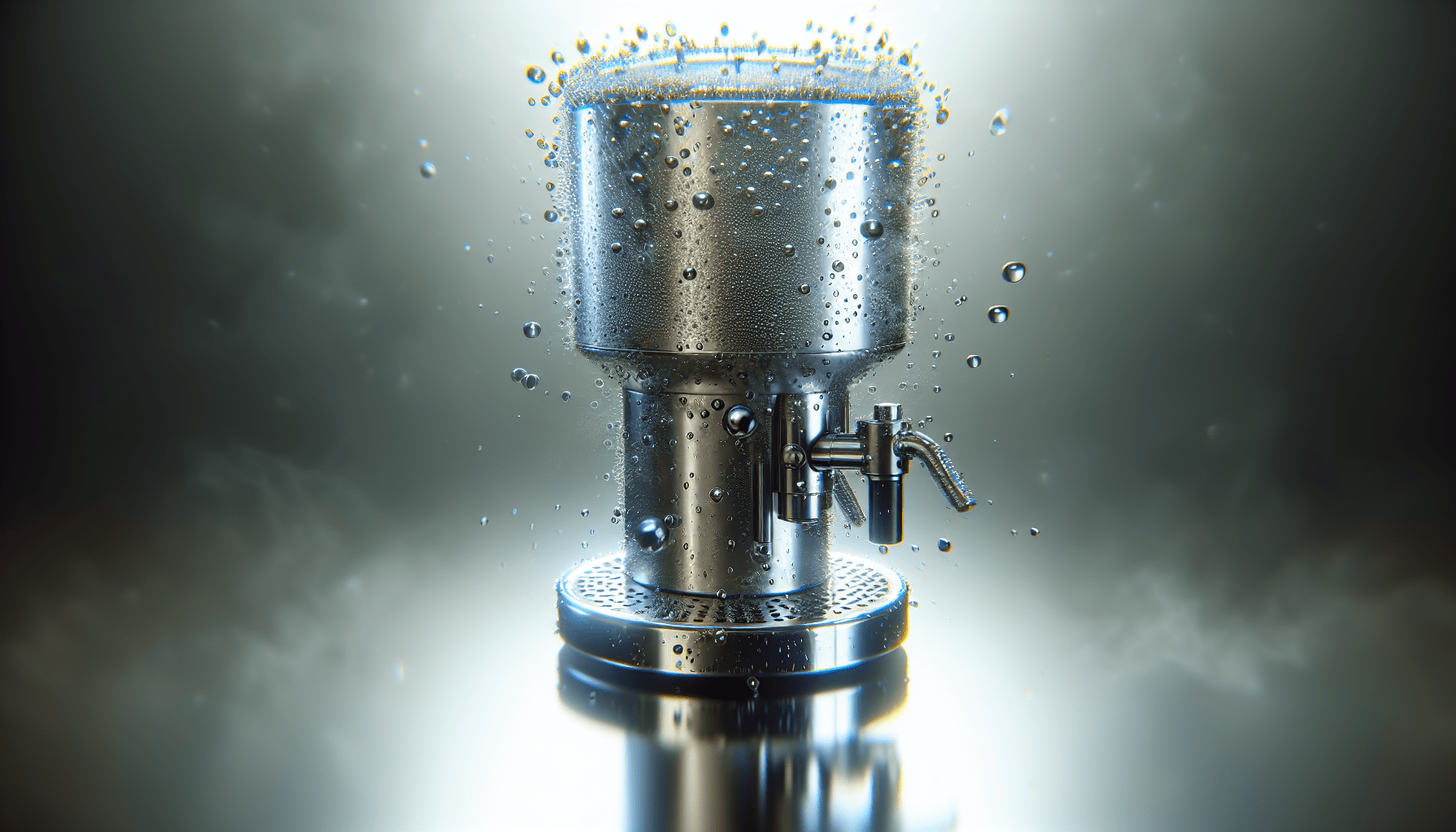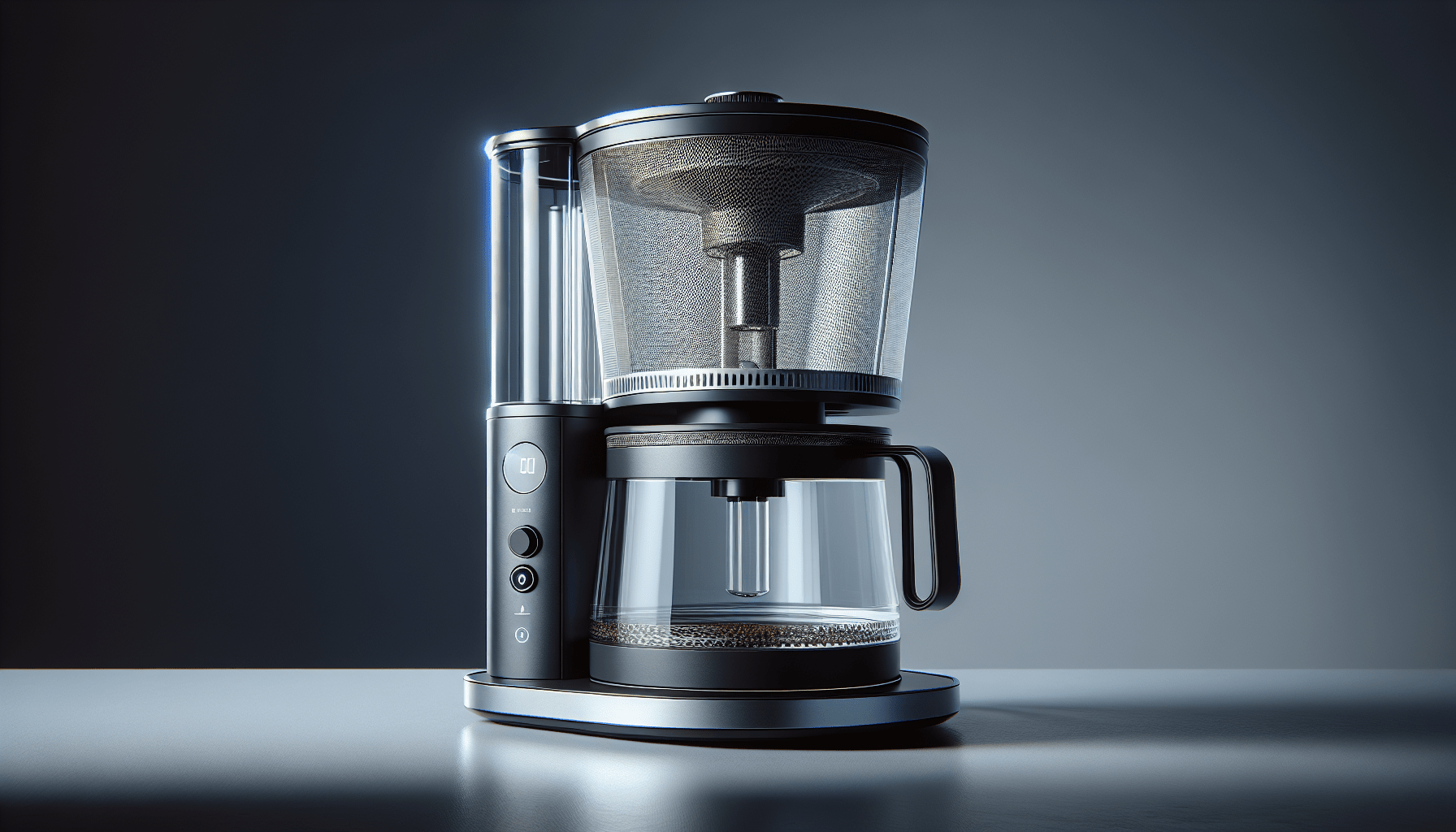Maintaining the cleanliness of your cold brew maker is crucial for producing consistently delicious and refreshing cold brews. But how often should you clean it? The answer to this question may vary, depending on factors such as frequency of use and personal preference. However, it is generally recommended to clean your cold brew maker at least once a week to prevent the buildup of residue and bacteria. Regular cleaning not only ensures the longevity of your cold brew maker but also guarantees a pure and refreshing cold brew experience every time you use it.
Importance of Cleaning
Cleaning is an essential aspect of maintaining your cold brew maker and ensuring that you enjoy a great cold brew experience every time. Regular cleaning not only helps prevent bacteria growth but also helps in maintaining the taste and quality of your cold brew and prolonging the lifespan of your equipment.
Preventing bacteria growth
One of the main reasons why cleaning is crucial in cold brew makers is to prevent the growth of harmful bacteria. Over time, residue from coffee grounds and oils can accumulate in the brewer, providing an ideal breeding ground for bacteria. These bacteria can not only affect the taste of your cold brew but also pose health risks if consumed.
By cleaning your cold brew maker regularly, you can eliminate any potential bacteria growth and ensure that your brewer remains clean and safe to use.
Maintaining taste and quality
Regular cleaning is vital for maintaining the taste and quality of your cold brew. Over time, oils and residues from coffee can build up in the brewer, leading to a stale and bitter taste in your brew. By cleaning the equipment thoroughly, you can remove these build-ups and ensure that your cold brew always tastes fresh and flavorful.
Additionally, cleaning also helps to remove any stains or discoloration that may occur on the components of the brewer. By keeping your equipment clean, you can enjoy a visually appealing cold brew experience as well.
Prolonging the lifespan of the equipment
Cleaning your cold brew maker also plays a significant role in extending the lifespan of your equipment. Regular cleaning helps to prevent the accumulation and build-up of mineral deposits, which can clog the internal mechanisms of the brewer and affect its performance.
By keeping your cold brew maker clean, you can ensure that it functions optimally for longer periods and avoid any maintenance or replacement costs that may arise from neglecting regular cleaning.
Factors to Consider
When determining how often you should clean your cold brew maker, several factors come into play. Considering these factors will help you customize your cleaning routine based on your usage and specific equipment.
Frequency of use
The frequency at which you use your cold brew maker is a crucial factor in determining the cleaning routine. If you use it on a daily basis, you will need to clean it more frequently compared to occasional users. The more you use the equipment, the more often you should clean it to prevent residue build-up and bacterial growth.
Water quality
The quality of water you use in your cold brew maker can also impact the frequency of cleaning. If you live in an area with hard water, mineral deposits can form in your brewer more quickly, requiring more frequent cleaning. On the other hand, if you use filtered or purified water, you may be able to stretch the time between cleanings.
Monitoring the water quality and observing any signs of mineral deposits will help you determine the appropriate cleaning schedule for your specific situation.
Type of brewer
Different types of cold brew makers may have varying cleaning requirements. Some may have removable parts that need to be soaked and cleaned separately, while others may have self-cleaning mechanisms. It is essential to refer to the manufacturer’s instructions and guidelines specific to your brewer to ensure you’re following the correct cleaning routine.
Daily Cleaning Routine
While a thorough cleaning routine is important, there are also daily maintenance tasks you can adopt to keep your cold brew maker in tip-top shape.
Rinsing the components
After each use, it is essential to rinse the components of your cold brew maker thoroughly. This helps remove any coffee grounds or residue, preventing them from building up and potentially affecting the taste of your future brews.
Using mild soap and warm water
For daily cleaning, you can use mild soap and warm water to clean the components of your cold brew maker. Gently scrubbing with a soft sponge or cloth will help remove any oils or stains without damaging the equipment.
Drying thoroughly
After cleaning, it is crucial to dry all the components of your cold brew maker thoroughly. Moisture left behind can lead to mold or bacteria growth. Ensure that all parts are completely dry before reassembling or storing them.
Weekly Cleaning Routine
In addition to the daily cleaning tasks, it is recommended to perform more thorough cleaning at least once a week to ensure the longevity and optimal functionality of your cold brew maker.
Disassembling the brewer
For the weekly cleaning routine, start by disassembling your cold brew maker. Remove any removable parts, such as the filter, filter gasket, or lid, depending on the type of brewer you have. This allows for a more thorough cleaning.
Soaking removable parts in vinegar solution
Fill a basin or sink with a solution of equal parts vinegar and water. Submerge the removable parts of your cold brew maker in the solution and let them soak for about 15-30 minutes. The vinegar helps break down any coffee residue or mineral deposits, making them easier to remove.
Scrubbing and rinsing all components
After soaking, use a soft brush or sponge to scrub the removable parts and the brewer itself. Pay particular attention to any hard-to-reach areas or crevices where coffee grounds or residue may have accumulated. Rinse all the components thoroughly to remove any traces of the vinegar solution and residue.
Monthly Cleaning Routine
Once a month, it is beneficial to perform a deep cleaning of your cold brew maker to ensure its optimal performance and longevity.
Deep cleaning with specialized cleaner
Invest in a specialized cleaner that is specifically designed for cleaning coffee equipment. Follow the manufacturer’s instructions on how to use the cleaner properly. This deep cleaning helps remove any accumulated oils, stains, or build-ups that may not be effectively eliminated through regular cleaning methods.
Inspecting for any signs of wear or damage
While cleaning your cold brew maker, take the opportunity to inspect all the components for any signs of wear or damage. Check for cracks, leaks, or any parts that may need to be replaced. Addressing any issues promptly will prevent further damage and ensure the continued functionality of your brewer.
Replacing worn out parts
If you notice any worn-out or damaged parts during your monthly cleaning routine, it is essential to replace them promptly. Using a cold brew maker with faulty components can affect the taste and quality of your brew, as well as pose safety risks. Contact the manufacturer or a trusted supplier to ensure you get the correct replacement parts for your specific model.
Signs of Neglect
Neglecting to clean your cold brew maker regularly can lead to several telltale signs that it’s time to give your equipment some attention.
Mold or algae growth
If you notice any mold or algae growth on the components of your cold brew maker, it’s a clear indication that it has been neglected. Mold and algae can not only affect the taste of your cold brew but also pose health risks. Cleaning your brewer thoroughly and regularly can prevent the growth of mold and algae.
Unpleasant odor or taste
A stale or unpleasant odor emanating from your cold brew maker is a sign that it needs cleaning. The buildup of residue and coffee oils can result in an off-putting smell that can transfer to your brew. Similarly, if your cold brew starts to taste bitter or less flavorful, it may be time for a thorough cleaning to restore the freshness and quality of your brew.
Clogged or slow brewing
If you notice that your cold brew is brewing at a slower pace than usual or the flow is blocked altogether, it is likely due to clogged components. Accumulated coffee grounds, minerals, or residue can obstruct the brewing process. Regular cleaning and maintenance, including descaling if necessary, will help prevent clogs and ensure a smooth brewing experience.
Cleaning Tips and Tricks
To make your cleaning routine more effective and efficient, here are some useful tips and tricks:
Use a brush or toothpick for small crevices
When cleaning your cold brew maker, pay attention to small crevices or hard-to-reach areas where residue or stain build-up may occur. A soft brush or toothpick can help you effectively remove any stubborn coffee grounds or residue without causing any damage to the equipment.
Avoid abrasive or harsh cleaning agents
While it’s important to keep your cold brew maker squeaky clean, using abrasive or harsh cleaning agents can damage the components. Stick to mild soap, warm water, and specialized cleaners designed specifically for coffee equipment.
Regularly descale if necessary
If you notice mineral deposits or scaling inside your cold brew maker, it’s essential to descale it regularly. Mineral build-up can affect the performance and taste of your brew. Follow the manufacturer’s instructions on how to descale your specific brewer or consider using a commercial descaling product.
Storage and Maintenance
Proper storage and ongoing maintenance play a crucial role in preserving the cleanliness and functionality of your cold brew maker.
Properly drying all parts after cleaning
After each cleaning session, ensure that all the components of your cold brew maker are thoroughly dried before storing them. Moisture left behind can lead to bacterial growth or corrosion. Letting the parts air dry or carefully drying them with a towel will help prevent any potential issues.
Storing in a clean and dry environment
When not in use, make sure to store your cold brew maker in a clean and dry environment. Avoid leaving it near kitchen sinks or in areas where it may be exposed to moisture. Storing it in a dry cabinet or cupboard will help protect it from dust and potential damage.
Regularly checking and tightening connections
Over time, certain connections within your cold brew maker, such as the filter attachment or spout, may loosen. Regularly check these connections and tighten them if necessary. Loose connections can affect the brewing process and lead to leaks or spills.
When in Doubt, Clean!
If you’re unsure about how often to clean your cold brew maker or if it needs cleaning, it’s always better to err on the side of caution and clean it. Regular cleaning and maintenance are essential for a great cold brew experience and ensuring the longevity of your equipment.
Err on the side of caution
When it comes to cleanliness, there’s no harm in being overly cautious. If in doubt, clean your cold brew maker to maintain the highest quality and ensure that your brews are safe to consume.
Follow manufacturer’s instructions
While this article provides general guidelines, it’s crucial to follow the specific cleaning instructions provided by the manufacturer of your cold brew maker. Different models may require different cleaning methods, so always refer to the instructions to ensure the best results.
Listen to your senses
Your senses, such as sight, smell, and taste, are excellent indicators of when it’s time to clean your cold brew maker. If you notice any visual signs of dirt or residue, detect an unpleasant odor, or taste bitterness in your brew, it’s a good indication that cleaning is needed.
Conclusion
Regular cleaning is essential for ensuring a great cold brew experience. Cleaning your cold brew maker not only prevents bacteria growth and maintains the taste and quality of your brew but also prolongs the lifespan of your equipment. By considering factors like the frequency of use, water quality, and type of brewer, you can customize your cleaning routine accordingly.
Adopting a daily cleaning routine of rinsing, using mild soap, and drying ensures basic maintenance. Additionally, a weekly cleaning routine involving disassembling, soaking in a vinegar solution, scrubbing, and rinsing helps remove stubborn residue. A monthly deep cleaning, inspection, and replacement of worn-out parts are also necessary for optimal performance.
Signs of neglect, such as mold or algae growth, unpleasant odor or taste, and clogged brewing, indicate the need for immediate cleaning. Helpful tips like using brushes for crevices, avoiding harsh cleaning agents, and descaling when necessary enhance the effectiveness of your cleaning routine.
Proper storage, drying, and regular maintenance further contribute to maintaining cleanliness and functionality. When in doubt, it’s always best to clean and follow the manufacturer’s instructions. By prioritizing regular cleaning, you can enjoy your freshly brewed cold coffee with peace of mind, knowing that it is both safe and delicious.




